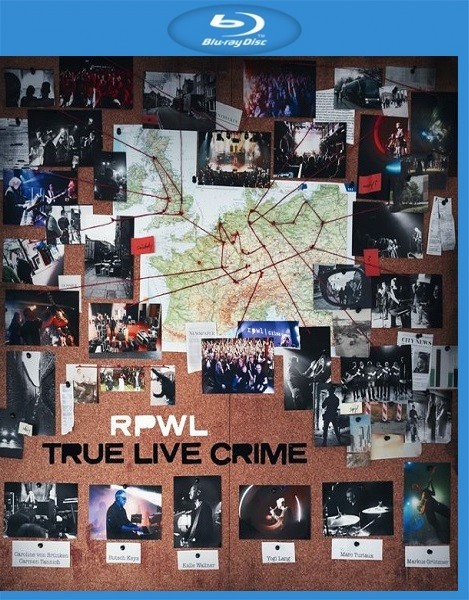
Pietro Soraci – Johann Sebastian Bach: Sämtliche Klavierwerke VIII – Inventionen und Sinfonien BWV 702-801, Concerto BWV 971, Aria variata BWV 989 (2024)
FLAC (tracks) 24 bit/96 kHz | Time – 01:10:49 minutes | 1,19 GB | Genre: Classical
Studio Masters, Official Digital Download | Front Cover | © Da Vinci Classics
This Da Vinci Classics album explores two crucial aspects of Bach’s output and of his style. On the one hand, there is the “Italianness” of his music; on the other, the pedagogical dimension.
Bach is rightly considered as one of the undiscussed champions of German music; not only because he is one of the greatest composers (if not the greatest) who ever lived in today’s Germany, but also because he displays some traits which are typical for the German Baroque. Among them, an interest for intricate polyphony which was already disappearing in the coeval music of other countries. Even among his contemporaries and peers, and even in Germany, Bach’s music was particularly complex under this viewpoint; he was even seen as antiquated by some, precisely because the international trends of the late Baroque era were pointing toward greater lightness and simplicity, in what would become the style galante, Rococo and then the Classical style.
Notwithstanding this, Bach’s stature goes beyond the boundaries of his country: not only because he in fact is a timeless and “spaceless” genius, but also because his music vastly exceeds the “typical” traits of the German Baroque. Bach displays a noteworthy openness of mind, demonstrating his interest in a variety of musical styles and genres. Even though he never set foot beyond the borders of today’s Germany (and also of a rather reduced portion of it), he was perfectly aware of all the new and old trends of music, and, when he did not adopt them, it was for a deliberate aesthetic choice, not for ignorance.
In particular, his interest in Italian music dated back to those which we can call his “student” years – even though his education did not follow standardized patterns. He is described by his family members as a curious youth who spent whole nights copying manuscripts of the music he loved, and, among these works, Italian compositions had pride of place.
One of the fields in which the Italians were undisputed leaders was that of the concerto. In fact, this very genre had been created in the Peninsula. Its form had been standardized and brought to perfection by Italians such as Corelli and Vivaldi, to name but two, and Bach was a keen reader and analyzer of the works of them both.
He also realized keyboard transcriptions after a fair number of such concertos, to be played on the harpsichord and/or on the organ. For many decades, these transcriptions had been considered as “homework”, i.e. as aiming primarily at the in-depth knowledge of these concertos’ architecture and structure. While this purpose was certainly present in Bach’s mind, this was by no means the only goal he pursued. His transcriptions are highly artistic in turn, and he effectively crafted a language which successfully renders the beauty of the original on a different means of sound production. The great challenge Bach faced particularly when transcribing for the harpsichord was that of preserving the timbral and dynamic variety of the original. He successfully managed to do so through a skillful use of texture and polyphony. Generally speaking, his transcriptions are denser in counterpoint than the original (in spite of there being just one instrument instead of many!) and the balance between thick and thin texture is what determines the typical contrasts which characterize the Italian concerto form.
And while these transcriptions are exceedingly beautiful in their own way, they actually can be seen also as a first step toward something else. On the one hand, this “something else” is Bach’s own output of solo concertos and concerti grossi (such as the Brandenburg Concertos), in which he creatively elaborates the Italian experience with a unique touch of his own style and personality. On the other hand, the so-called Italian Concerto (more faithfully translated as Concerto in the Italian taste) is the perfect embodiment of the “lessons” he had learnt from his Italian colleagues.
It is rightly considered as one of the absolute masterpieces of keyboard literature. Its three movements seem to anticipate what will become one of the standard forms of the Classical Sonata. Its opening movement has an inexhaustible drive, thanks to the alternation of questioning and affirmative musical phrases, whose “instrumental” nature comes to the fore through the large intervals and long lines it employs. It is throughout cheerful and joyful, open and with broad musical horizons. In a certain sense, one could say that it embodies the sunny “Italian lifestyle” as a German could see or imagine it.
While the first movement closely resembles a transcription after an imaginary concerto grosso, the second movement is related to the tradition of the solo concerto. Indeed, it has many points in common with Alessandro Marcello’s Oboe Concerto in D minor, which had also been transcribed by Bach. Typically, the accompaniment is highly musical in turn, with an important melodic component. Over it, the beautiful, ornamented line of the right hand weaves an embroidery over the extremely stretched melodic lines it presents.
The intense expressive tension of this second movement, where dramatic moments are not missing, dissolves immediately as the third movement appears, with its unforgettable and energetic perpetuum mobile. Its scales – a quintessentially “directional” element of music, leading the listener wherever the composer desires – normally reach, at their top, a short descending motif. In it, Paul Badura Skoda identified a chorale quotation, In dir ist Freude, “In Thee is joy”. If it was really Bach’s intention to quote that Chorale here, it would make an interesting connection: the secular joy expressed by this movement is rooted in sacred joy, and the Italianness of this Concerto does not exclude the presence of German culture, as embodied in the Chorale.
Italianity is also present in the Aria variata alla maniera italiana; in this case, Bach’s model is rather in the tradition of Frescobaldi and other keyboardists of the early Baroque era. This beautiful sequence of Variations seems in many ways to anticipate the great Goldberg Variations, while not having the major cycle’s structural complexity and contrapuntal refinement. Yet, on the plane of Bach’s handling of the musical material, this set is superb: the lyrical, subdued style of the Theme is transformed into a full palette of emotions and affections, of musical styles and genres. Each Variation seems to grow on the preceding one, and thus a perfect balance of unity and variety is achieved.
Such sets of Variations had frequently also a pedagogical value. Each Variation could be understood as a miniature Etude, and the fact of having just one origin in the theme provided a musical bonus which encouraged the pupil’s practice. The same principle is observed in the Inventions and Symphonies, although in their case the pedagogical intent is clearly stated and fundamental.
Bach was a great pedagogue, both as concerns the art of composition and that of performance. He taught the students of the Thomasschule in Leipzig, but also his own children. They all belonged in a family of musicians counting tens of members throughout Northern Germany, and Bach was clearly set on the idea of continuing the tradition. To provide his children with the highest possible skills in music was therefore an obvious choice for him. There was the desire to perpetuate tradition; there was the conviction that he would be assuring his children’s future and their living if he provided them with excellent musical skills and proficiency; and there was, probably and legitimately, also his interest, as a father, in looking with pride at what his children had learnt of him.
Bach was evidently inspired by an ancient dictum, which is found, among others, in Lucretius’ De rerum natura. It speaks of honey on the brim of the bitter cup, which helps to swallow the medicine. Similarly, it was said, if pupils learnt with pleasure their lessons rather than under duress, their learning would be more efficacious and long-lasting. Within this perspective, the fifteen Inventions and fifteen Symphonies are absolute models of the “learning-with-pleasure” model.
The Inventions are in two parts. Each hand plays a line, and polyphony is maintained throughout. There are abundant imitations; the two hands are in constant dialogue. Musically, this develops the first seeds of the polyphonic thought which is crucial for an accomplished keyboard player, and which consists in the parallel concept of two or more independent parts.
Technically, this helps to structure the mechanical equality of both hands, whilst other composers tend to privilege the right hand, seconding a natural tendency of most right-handed people.
The musical result is splendid, and each of these short miniatures bespeaks a whole musical world of its one.
This musical quality becomes even more pronounced with the Symphonies in three parts; here, the middle voice needs constantly to be split between one or the other hand, and thus the dissociation between hand and part is implanted into the young performer’s mind and hands. This dissociation is even more complex to handle than the preceding, because now not only there is one more line to manage, but also the need to make the inner line be understood as continuous and flowing in spite of its constant break by one or both hands.
This repertoire, therefore, bears witness to Bach’s countless styles, all unified by his gigantic personality, but also extremely varied and pursuing consistency throughout its pages.
Tracklist:
1-1. Pietro Soraci – Concerto nach Italiænischen Gusto in F Major, Op. 2, BWV 971: I. Allegro (03:49)
1-2. Pietro Soraci – Concerto nach Italiænischen Gusto in F Major, Op. 2, BWV 971: II. Andante (04:05)
1-3. Pietro Soraci – Concerto nach Italiænischen Gusto in F Major, Op. 2, BWV 971: III. Presto (03:28)
1-4. Pietro Soraci – Inventionen No. 1 in C Major, BWV 772 (01:01)
1-5. Pietro Soraci – Inventionen No. 2 in C Minor, BWV 773 (01:23)
1-6. Pietro Soraci – Inventionen No. 3 in D Major, BWV 774 (01:06)
1-7. Pietro Soraci – Inventionen No. 4 in D Minor, BWV 775 (00:53)
1-8. Pietro Soraci – Inventionen No. 5 in E-Flat Major, BWV 776 (01:20)
1-9. Pietro Soraci – Inventionen No. 6 in E Major, BWV 777 (03:12)
1-10. Pietro Soraci – Inventionen No. 7 in E Minor, BWV 778 (01:04)
1-11. Pietro Soraci – Inventionen No. 8 in F Major, BWV 779 (00:48)
1-12. Pietro Soraci – Inventionen No. 9 in F Minor, BWV 780 (01:16)
1-13. Pietro Soraci – Inventionen No. 10 in G Major, BWV 781 (00:52)
1-14. Pietro Soraci – Inventionen No. 11 in G Minor, BWV 782 (01:08)
1-15. Pietro Soraci – Inventionen No. 12 in A Major, BWV 783 (01:26)
1-16. Pietro Soraci – Inventionen No. 13 in A Minor, BWV 784 (01:03)
1-17. Pietro Soraci – Inventionen No. 14 in B-Flat Major, BWV 785 (01:31)
1-18. Pietro Soraci – Inventionen No. 15 in B Minor, BWV 786 (01:02)
1-19. Pietro Soraci – Sinfonien No. 1 in C Major, BWV 787 (01:00)
1-20. Pietro Soraci – Sinfonien No. 2 in C Minor, BWV 788 (02:06)
1-21. Pietro Soraci – Sinfonien No. 3 in D Major, BWV 789 (01:05)
1-22. Pietro Soraci – Sinfonien No. 4 in D Minor, BWV 790 (02:01)
1-23. Pietro Soraci – Sinfonien No. 5 in E-Flat Major, BWV 791 (01:34)
1-24. Pietro Soraci – Sinfonien No. 6 in E Major, BWV 792 (01:19)
1-25. Pietro Soraci – Sinfonien No. 7 in E Minor, BWV 793 (02:19)
1-26. Pietro Soraci – Sinfonien No. 8 in F Major, BWV 794 (01:02)
1-27. Pietro Soraci – Sinfonien No. 9 in F Minor, BWV 795 (02:42)
1-28. Pietro Soraci – Sinfonien No. 10 in G Major, BWV 796 (01:13)
1-29. Pietro Soraci – Sinfonien No. 11 in G Minor, BWV 797 (01:35)
1-30. Pietro Soraci – Sinfonien No. 12 in A Major, BWV 798 (01:19)
1-31. Pietro Soraci – Sinfonien No. 13 in A Minor, BWV 799 (01:41)
1-32. Pietro Soraci – Sinfonien No. 14 in B-Flat Major, BWV 800 (01:41)
1-33. Pietro Soraci – Sinfonien No. 15 in B Minor, BWV 801 (01:36)
1-34. Pietro Soraci – Aria variata alla maniera italiana in A Minor, BWV 989 (15:53)
Download:

![Yes - Mirror To The Sky (Deluxe edition) (2023) [High Fidelity Pure Audio Blu-Ray Disc]](https://imghd.xyz/images/2024/05/07/431fc5ccc69a7bf19509084e0e9f70ba.jpg)


![Nektar - Remember The Future (Deluxe Edition) (1973/2023) [High Fidelity Pure Audio Blu-Ray Disc]](https://imghd.xyz/images/2024/05/01/NjktMTk3MS5qcGVn.jpg)











![Pietro Soraci – Sämtliche Klavierwerke VI – Johann Sebastian Bach: Das Wohltemperierte Klavier (BWV 846-893) (2022) [Official Digital Download 24bit/96kHz]](https://imghd.xyz/images/2022/07/08/w79s8cj4i065b_600.jpg)